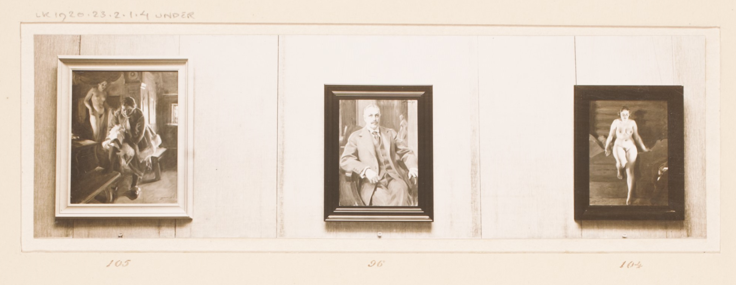Anders Zorn
"Loftsängen"
Signed and dated 1919. Canvas 100 x 75.5 cm.
Alkuperä - Provenienssi
Generalkonsul Axel Ax:son Johnson.
Private Collection.
Näyttelyt
Liljevalchs konsthall, Stockholm, "Bruno Liljefors / Anders Zorn", 10 - 25 April, 1920, cat. no 104.
Kirjallisuus
Gerda Boëthius, "Anders Zorn - tecknaren, målaren, etsaren, skulptören", 1949, mentioned p. 517, listed in the catalogue supplement p. 555.
Tor Hedberg, "Anders Zorn 1894-1920", 1924, illustrated p. 149, image no 105.
Muut tiedot
"Loftsängen" from 1919 is an example of what is often referred to as Anders Zorn's ultima maniera – his last style. In his paintings from the early 20th century onwards, Zorn discovered a new mode of expression in which one can discern the continuation of his broad brushstrokes and the reduced sharpness of contours from his previous periods. However, one also perceives a fresh simplicity, characterized by a more concentrated color palette and a greater degree of formal restraint.
In the painting, we see the young Mora girl sitting naked on the loft bed, her gaze turned to the side, and her clothes collected on the floor to her left. Zorn and his wife Emma had permanently settled in the artist's hometown of Mora in 1896 and had become avid advocates of the local culture, aiming to make the Dalarna regional culture a national concern. In the early years of the 20th century, he began to depict the naked Mora girl in various interiors. Zorn enjoyed painting them in the timber cabins he owned in the town, effectively portraying the simple local life he advocated for.
Zorn's several paintings of the naked Mora girls can be seen as a development of his archipelago motifs, which had brought him great success since the late 1880s. In the summer of 1888, he began depicting scenes with the nude female body in the sunny archipelago environment, and he returned to the theme many times throughout his career. During his early years at the Royal Academy of Fine Arts, he had the opportunity to study the human nude, and he was also familiar with the centuries-old artistic tradition of the naked woman in nature.
Photo: The Liljevalchs konsthall archives: "Bruno Liljefors / Anders Zorn", 10 - 25 april, 1920, Liljevalchs konsthall, cat. no 104.


















































